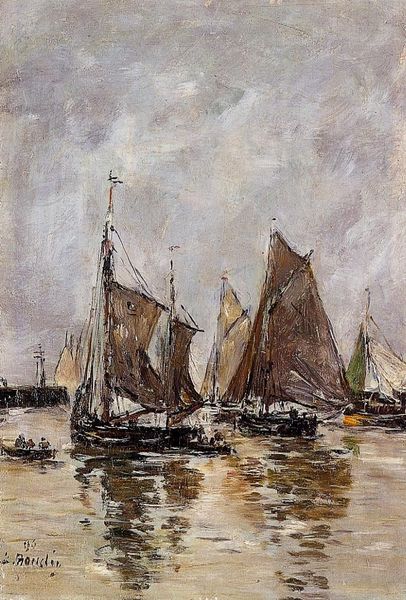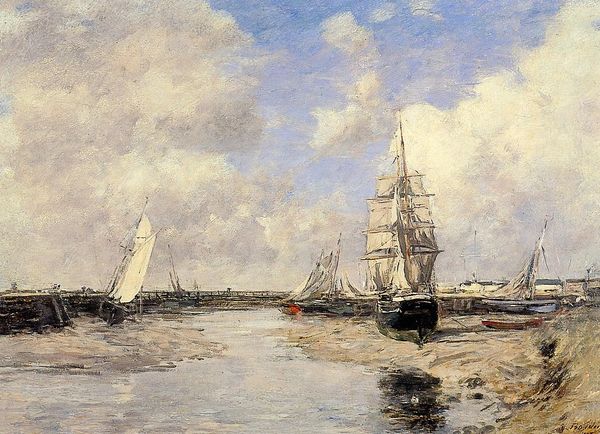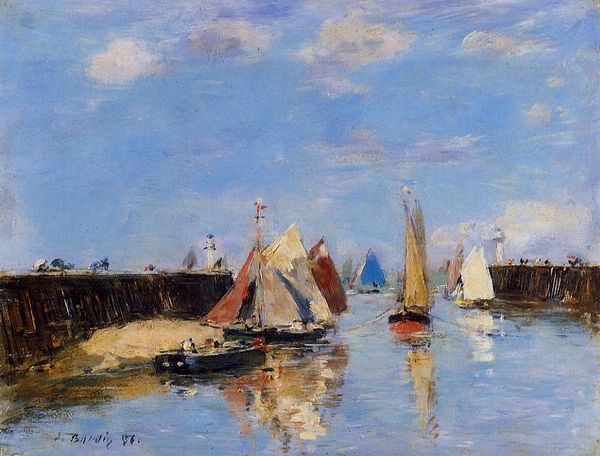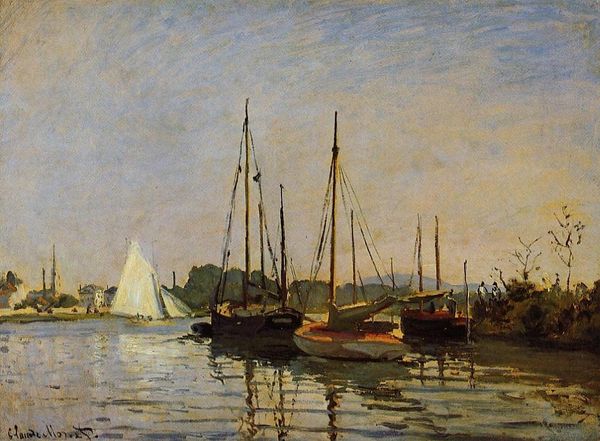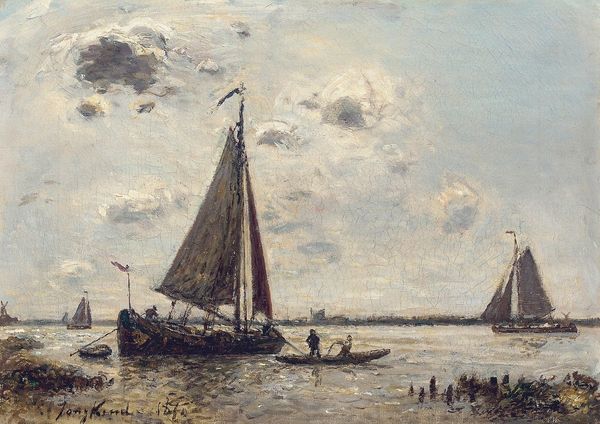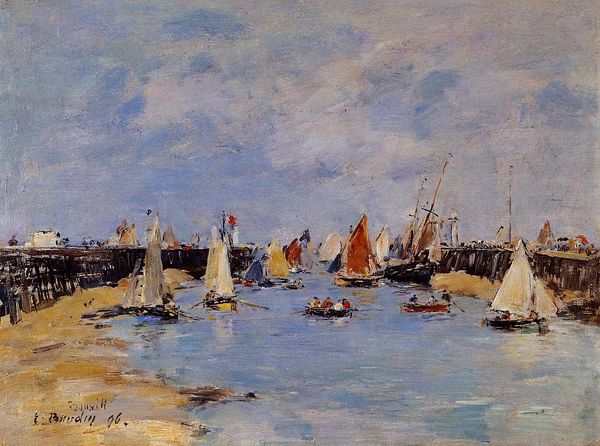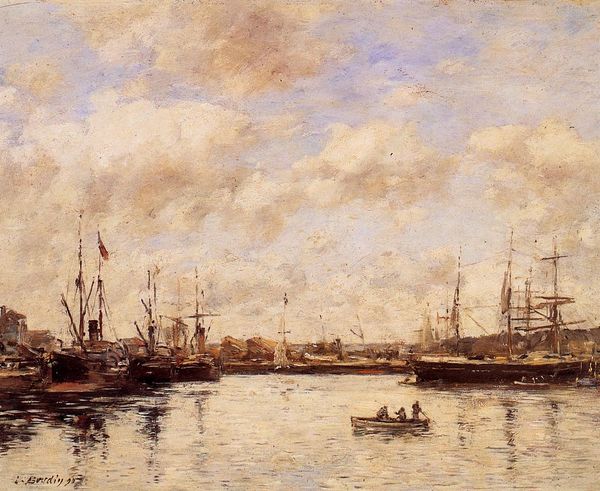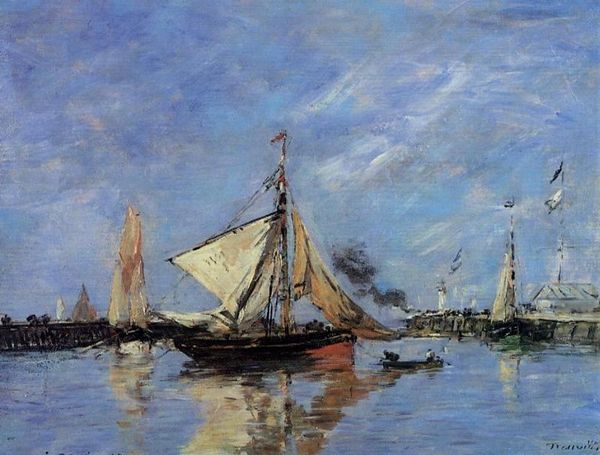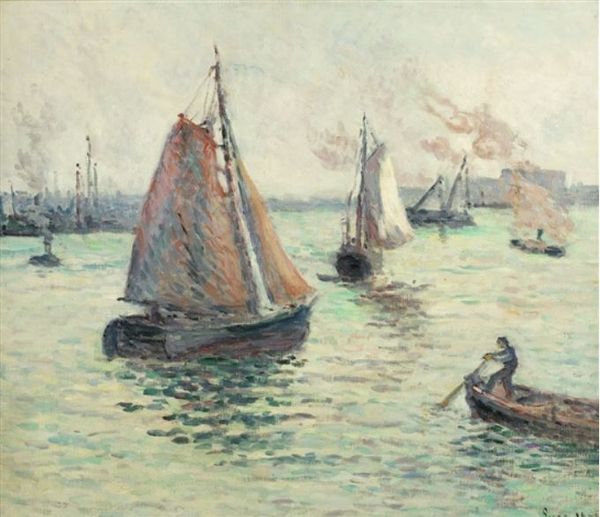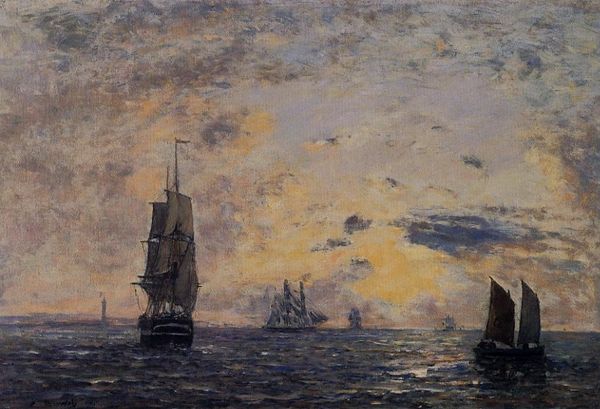
painting, plein-air, oil-paint
#
painting
#
impressionism
#
plein-air
#
oil-paint
#
landscape
#
impressionist landscape
#
oil painting
#
genre-painting
Copyright: Public domain
Editor: This is Eugène Boudin's "Fishing Boats at Berck," painted in 1878, using oil on canvas. There's a stillness to it, a quiet moment on the water with these ships gathered together. What do you see in this piece, particularly beyond its visual serenity? Curator: Beyond the Impressionistic surface, I see a snapshot of labor and its relationship to the sea. Boudin wasn't merely capturing light and atmosphere; he was documenting the working lives of coastal communities. Think about the socio-economic context. These boats represent livelihoods, hard work, and a direct connection to the natural world, wouldn't you agree? Editor: That's interesting; I hadn’t considered that. I was focused on the artistic style rather than the social commentary. But, if we view this piece as a document, aren’t we romanticizing the hardship inherent in that type of labor? Curator: That's a valid point. There’s always a risk of romanticization when representing working-class life. But consider: Boudin often depicted these scenes *en plein air,* painting directly in the environment, engaging with the same conditions the workers faced. Does this influence your reading? What are the implications of him painting on location in real-time? Editor: I see your point; there is a raw intimacy captured. Seeing those workers gives a face to the back-breaking labor required to gather what is available in the sea. Now I wonder, how did these paintings change the general public's ideas about workers? Curator: That is a question for additional investigation! Paintings like these provided a window into a world largely unseen by the Parisian art world, subtly challenging their perceptions and assumptions. Boudin offers more than a pretty picture, and invites conversations about class, labor, and representation in art. Editor: I never would have seen all of that. Thank you. Curator: My pleasure!
Comments
No comments
Be the first to comment and join the conversation on the ultimate creative platform.
